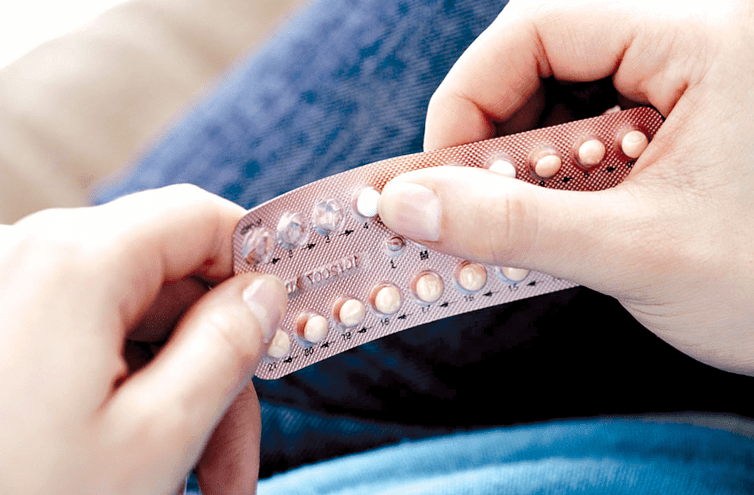Vihiga, Homa Bay avail free hormonal contraceptives to tackle maternal mortality

Vihiga and Homa Bay are among the first counties in the country to roll out hormonal intrauterine devices, a family planning method that was previously only available in the private health sector.
The new method of contraception also comes in handy to women whose medical profiles could not allow them to use any other family planning methods.
The hormonal Intrauterine Device (IUD) family planning prevents menorrhagia — a condition characterised by painful or heavy bleeding during menstrual periods that can last as many as 10 days — and therefore helps to prevent iron-deficiency anaemia in women.
Data from the counties’ health department shows that from 2020 to the present, Homa Bay has offered 2,463 insertions to women while Vihiga has given 929.
Veronicah Musiega, Vihiga County’s Reproductive Health Coordinator, says family planning is one of the county’s strategies to reduce maternal mortality.
The counties are borrowing from the worldwide evidence, such as the 2012 study published in the medical journal Lancet, that family planning averted 44 per cent of the global maternal deaths.
“The World Health Organisation (WHO) recommends spacing pregnancies by two years or more following childbirth to allow the woman’s body to heal and avoid complications in the following delivery,” says Musiega.
Homa Bay is among the only six counties in Kenya with maternal mortality above 500— it is at 516, as indicated in a 2022 report from the Ministry of Health. Vihiga’ is equally high at 393.
James Otiato, Homa Bay Reproductive Health Coordinator says after the county intensified community awareness of the method, many mothers have taken it up.
Otiato says about 60 healthcare workers have been trained to provide modern family planning services to mothers with a view of regulating births.
The health official added that Homa Bay has witnessed men who brought their partners to accept the method.
“Women now have multiple choices of family planning that best suit them,” Otiato said.
A hormonal intrauterine device is a small piece of flexible plastic shaped like a T that releases 20 microgrammes of the hormone progestin directly into the woman’s uterus every 24 hours for three to six years. Progestin is like the hormone progesterone that women’s bodies secrete naturally.
Mother of five Rose Achieng from Kilingili village in Vihiga County, could not use any other family planning method due to menorrhagia for more than 15 years.
“Since no other family planning was working for me, healthcare workers recommended that I turn to hormonal IUD, but I could not afford it,” said the 42-year-old.
Rising demand
Achieng initially used the implant method, which exposed her to specific side effects such as irregular and heavy menses.
One in 10 women (14 per cent) are sexually active and do not use any modern contraceptive methods despite having the desire to use them. This is according to the latest Kenya Demographic and Health Survey (KDHS) released in 2022.
The KDHS report shows the demand for family planning in Homa Bay county by modern methods is at 77 per cent while the level of uptake among women (of married age 15-49) by use of modern methods is at 54 per cent.
Implants are still largely used by women in the county followed by IUDs in terms of long-term contraceptive methods. Some women here use injectables and contraceptive pills.
For Vihiga County, the report indicates the use of family planning (married women aged 15-49) is at 60 per cent on modern contraceptives. The county’s demand for family planning by modern methods (of married women aged 15-49) stands at 74 per cent.
Most women in the county are more inclined to implant and injectable methods. The journey to prepare the county to procure the commodity, stocking public health facilities where women such as Rose could get the service began in 2016, according to midwife and mother and child health specialist Alinda Ndenga.
Alinda said: “Before rolling out the hormonal IUD as one of the family planning methods that women receive for free in the public health facilities, the health system needed to be ready with healthcare providers able to determine who is qualified for the hormonal IUD based on a set of medical criteria; counsel the women appropriately and when they accept, healthcare provider inserts the hormonal IUDs safely. The hormonal IUD can be removed at any time as per the needs of the woman.”
The World Health Organisation added hormonal IUD to the WHO essential medicines list in 2015, allowing governments such as Kenya to use it. Kenya added it to the country’s essential medicine list in 2019.
However, the method has only been available in private hospitals in Kenya at a cost, where women paid as much as Sh20,000. Expectedly, the cost was far out of reach for many women.
In a previous interview, Dr Albert Ndwiga, Kenya’s head of the Family Planning Programme at the Ministry of Health who heads the country’s family planning programme, said the ministry and other partners negotiated the product down.
“It came to Sh1,548 (US$12) per unit, yet it would have cost us between Sh7,000 and Sh30,000, as the list price, but we, of course, offer it for free to mothers,” Dr Ndwiga said.
This move made Kenya one of the 11 countries that have achieved or are on track to achieve modern contraceptive prevalence goals. The country has spent as much as Sh3.1 billion (US$24 million) to expand the range of safe, affordable, high-quality contraceptive methods available to women.
After the commodity was available, the country had to battle the wave of misinformation that prevented women from using the family planning method. Otiato says that politicians have a grip on the communities’ reproductive health: pushing to have the tyranny of numbers to win more votes during elections while the elders are advocating for the community getting many children to increase the population.
“We have issues with the Luo Council of Elders and the politicians pushing the narrative of having many children against the agenda ofamily planning,” he says.
A section of Luo elders have been on record asking the community men to shun family planning and instead sire more children to grow the community’s population.
The elders blame the use of family planning methods to slowed growth of the community in terms of population.
“Most members of the community, especially women, are enrolled in different family planning methods at an early stage without considering its effects on the population,” said mzee Nyandiko Ongadi.
Ongadi claims that modern family planning practices hinder women’s ability to give birth when their ages advance. Other concerns came from safety.
“Some also think it causes cancer, depression, weight gain and infertility,” Musiega said.
In response to the safety concerns, the counties trained healthcare workers on how to appropriately support the women to choose the family planning method that is appropriate for them.
Preventing stockouts
The nurses and midwives use a technique of discussing their reproductive priorities, and the healthcare provider helps the client to eliminate the family planning methods that would not fit in that lifestyle until they settle on one or two that they can discuss and choose.
Musiega explained: “We do not give the mothers all the information about all family planning methods; I know she would have forgotten the information by the time we finished talking, so I asked questions like “Do you want to have another child?” When she said “Yes”, I eliminated all the permanent methods.”
The counties have also worked to ensure a reduction of stockouts of family planning commodities and inadequate equipment.
Otiato says their department is carrying out continuous demand creation through outreaches using community health providers to educate the public. “We are trying to demystify the dilutions around family planning through health education,” he states, while pointing out occasional stockouts of commodities, inadequate equipment, especially on the long term contraceptive service provision and unskilled healthcare workers as other challenges to women’s access to modern family planning techniques.
The counties also got unusual allies: the men. Wickliffe Jaica, a male champion of family planning in Vihiga County, is leading the frontier to ensure men fully embrace the concept.
Men’s role in contraception
Jaica has been reaching out to men within the community telling them how spacing the children they want gives them adequate time to prepare for the next. Riding on certain misconceptions, he says most men have been slow to embrace family planning.
“Ordinarily, most men do not support family planning concepts and, therefore, would not want their spouses to be associated with such,” he says.
However, Jaica, is also a health worker in the county, believes with more advocacy the trend may change drastically.
“The objective is to change this narrative and ensure that men entirely support family planning,” says Jaica, who on many occasions accompanies her partner whenever she goes for the contraceptive.
The father of two, stresses that men should freely allow their spouses to use contemporary family planning, citing numerous benefits— economic and social.
“Couples that plan their families well will have a controlled number of children they can properly take care of,” he adds.
Beatrice Jowi, a nurse at the Homa Bay County Teaching and Referral Hospital emphasises the importance of women using modern contraception methods to determine the spacing of their pregnancies.
Jowi says spacing of births is a significant health component as it helps the mothers to prevent developing health complications and gives them more control over their reproductive lives.
According to Jowi, women who give birth at close intervals stand the risk of experiencing uterus rupture during or after delivery, a situation, which may lead to loss of life.
“The life of the mother giving birth too soon after the other is at high risk of developing complications. Many women have died as a result of such pregnancy-related problems, during or after delivery,” she offers.
Jowi adds: “We periodically conduct health talks with couples to demystify family planning-related myths. With better health and greater control over their lives, women can take advantage of education, employment and civic opportunities.”









